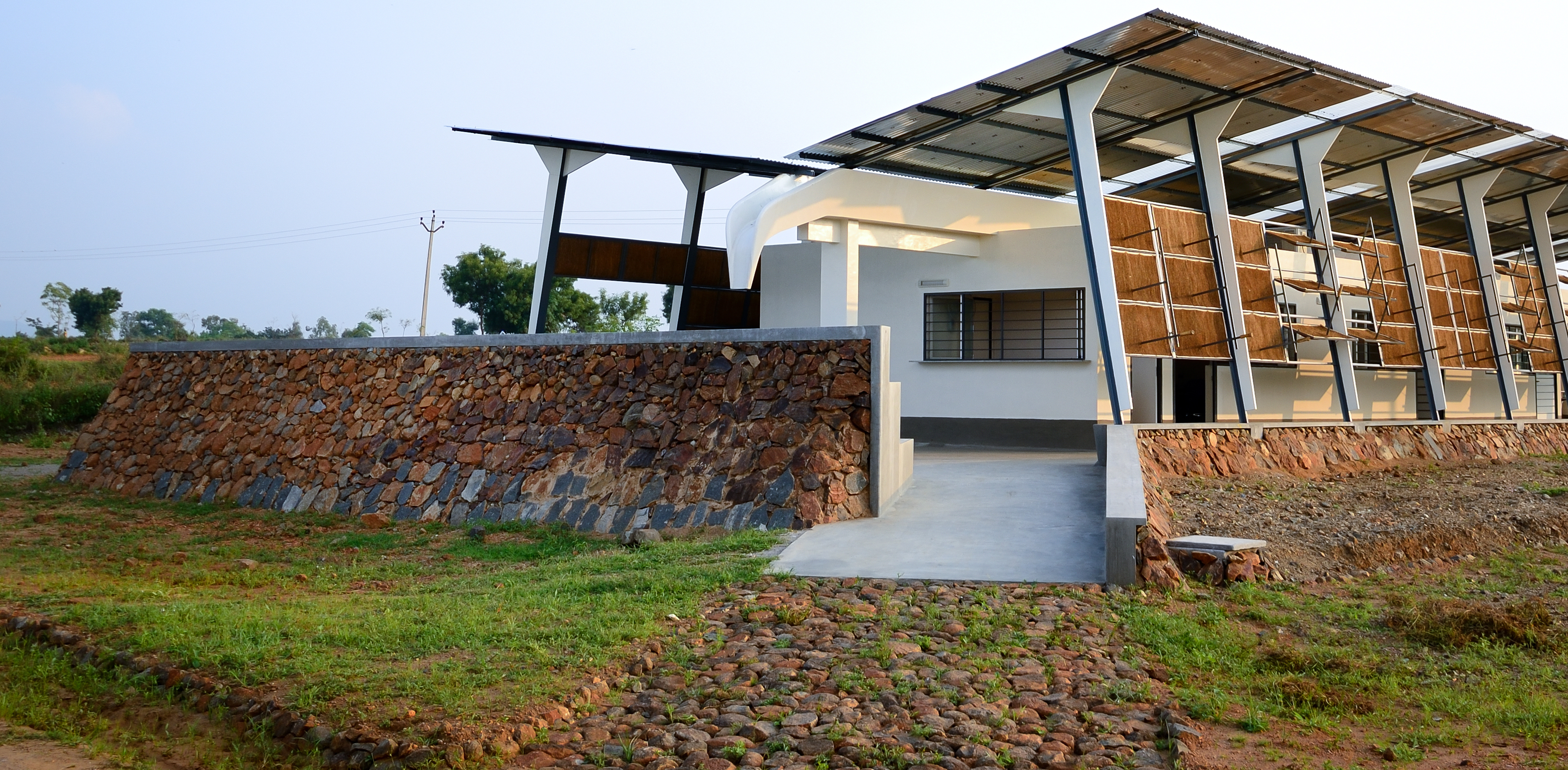Calling all architects, landscape architects and interior designers: Architizer's A+Awards allows firms of all sizes to showcase their practice and vie for the title of “World’s Best Architecture Firm.” Start an A+Firm Award Application today.
Adaptive reuse is never a straightforward task. So when Heatherwick Studio set out to create Zeitz MOCAA — a daring structure on Cape Town’s Victoria & Alfred Waterfront — the architects knew it would be a challenging process filled with many reiterations. Originally built in 1921 to store and grade maize from all over South Africa, the imposing concrete structure had since been decommissioned in the 1990s, with the advent of containerized shipping. Derelict and repudiated by the public, it was in many ways, an unsought canvas.
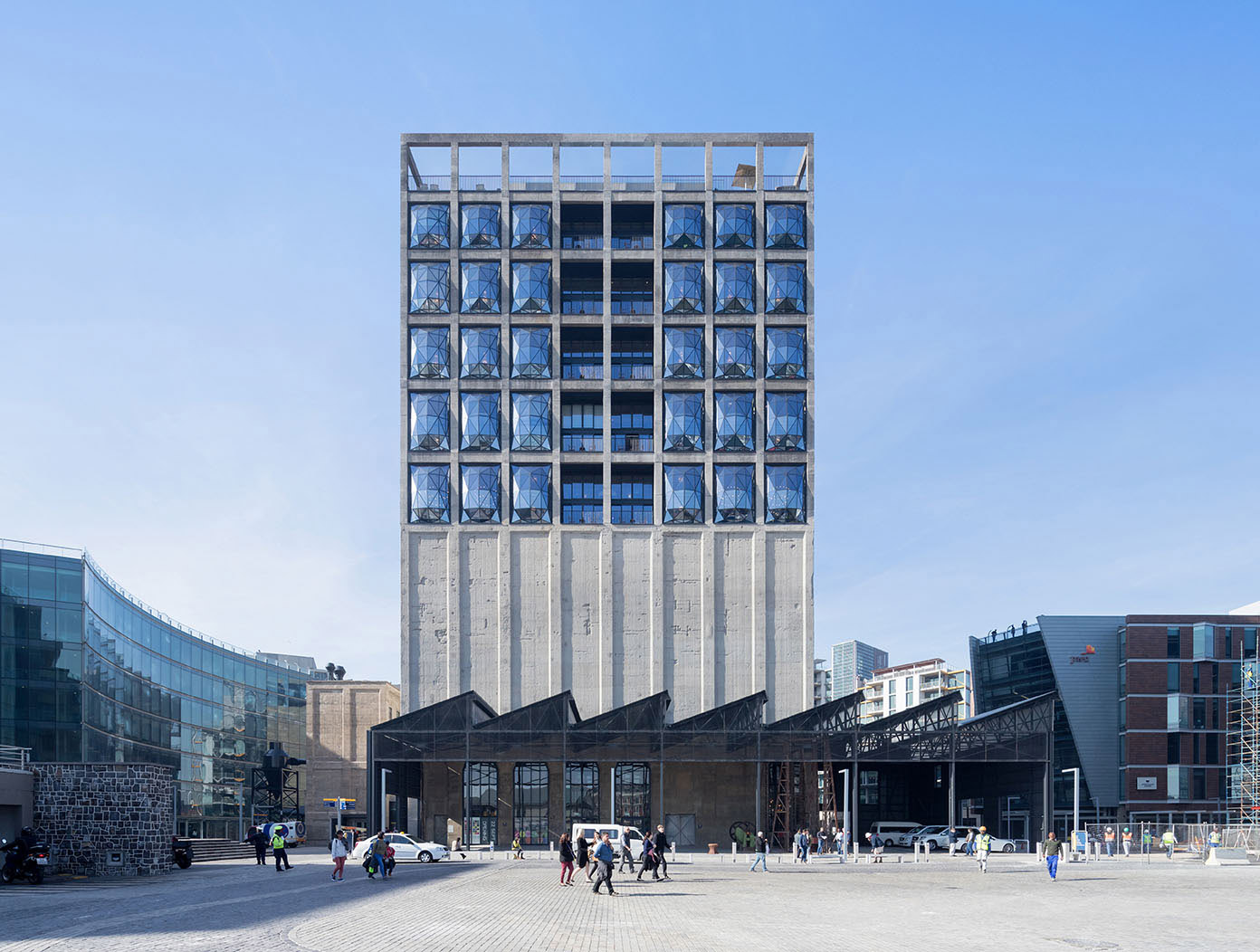
Image via Heatherwick Studio
Confronted with such a lofty challenge, no one could have pinpointed exactly what would emerge as the tallest structure on Cape Town’s waterfront underwent its six-year transformation.
In order to signal the building’s complete programmatic change to the public, and invite visitors into Africa’s first international museum dedicated to contemporary African Art, Heatherwick Studio was tasked with dramatically reimagining both the interior and exterior of the building. Rather than resorting to wholesale demolition, Heatherwick harnessed existing potential that they saw in the abandoned structure, to create a stunning and completely theatrical new space.
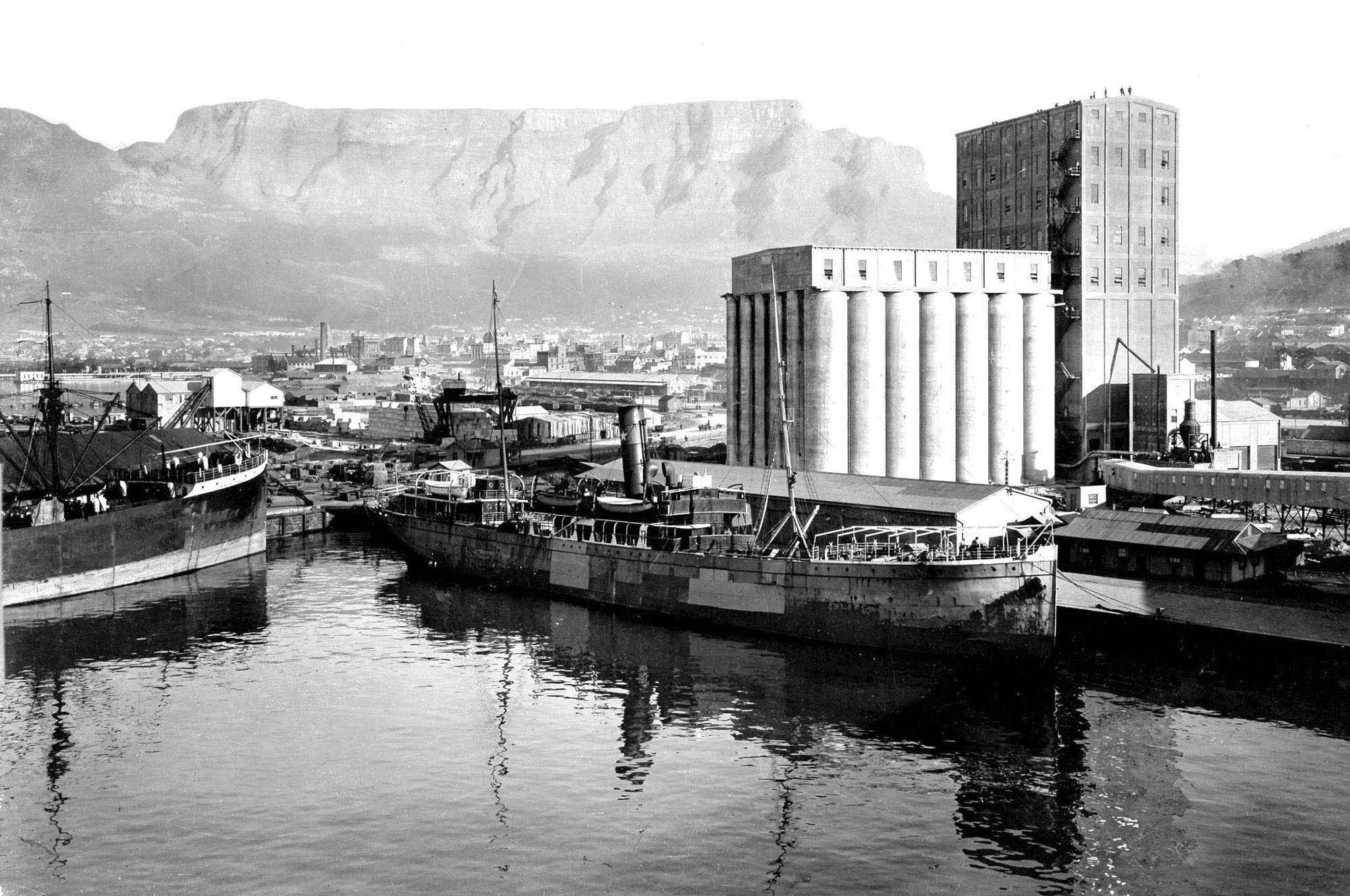
Image via Heatherwick Studio
What rises today as a museum with 80-box shaped galleries, a rooftop sculpture garden and a boutique hotel, was once a collection of two very different buildings: an elevator tower and a storage annex. Together, the structures included a 190-foot-tall cluster of rectangular and square bins and a shorter cluster of 42 tightly-packed cylindrical silos.
In its final jaw-dropping form, two elements of Zeitz MOCAA that beg particular exploration are the building’s otherworldly concrete atrium and its faceted glazing, which signal its modern identity to the public realm.
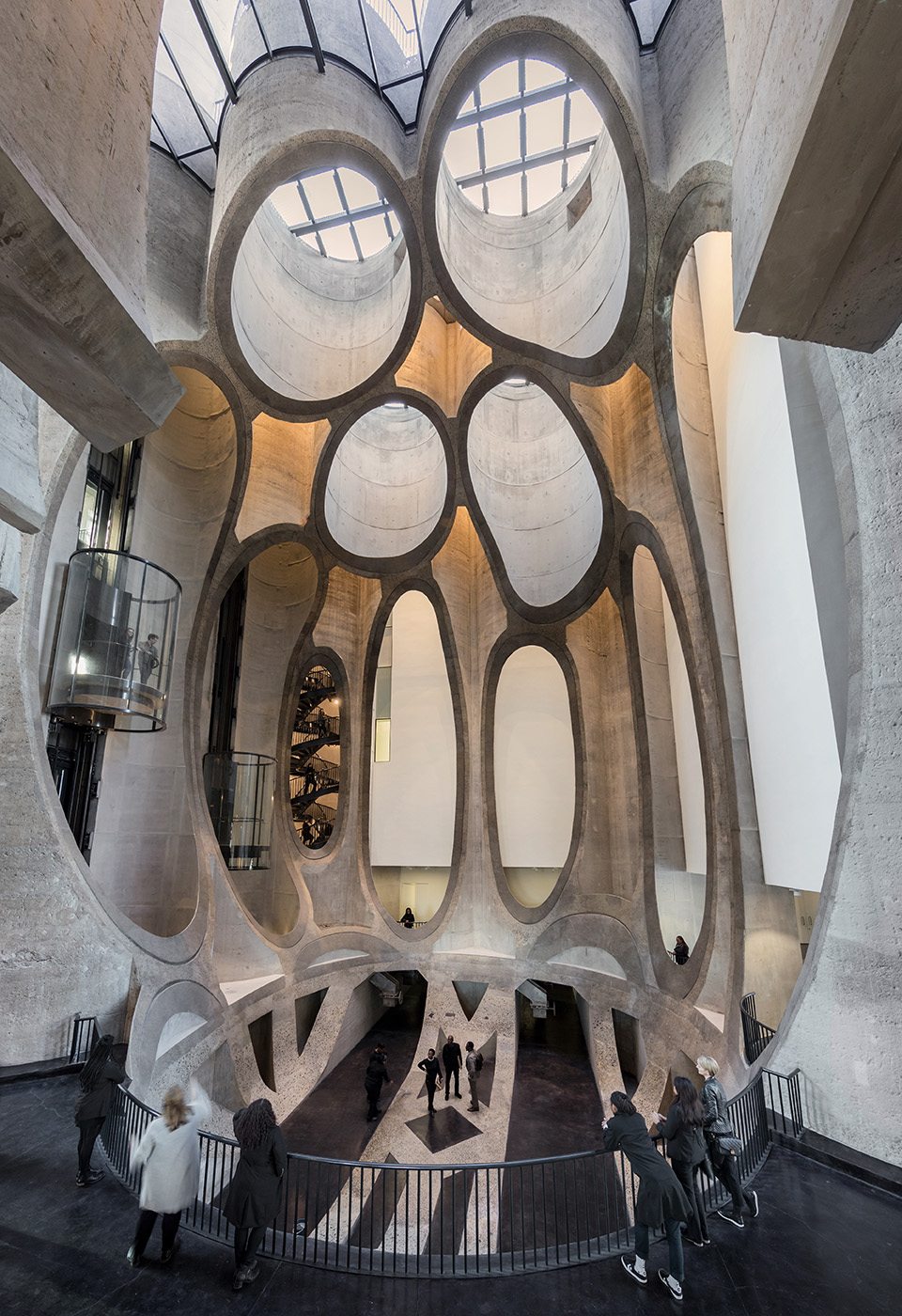
Image via Heatherwick Studio
Zeitz MOCAA’s main skylit atrium is “as affecting as Frank Gehry’s Guggenheim Bilbao,” wrote Sarah Williams Goldhagen in Architectural Record. It is “at once dynamic and containing, sensuously textural and gravely monumental.” Acknowledging the rigid geometry of the existing building and the associated risk of creating an overly static design, Heatherwick turned to the biomorphic curves of a corn kernel for inspiration.
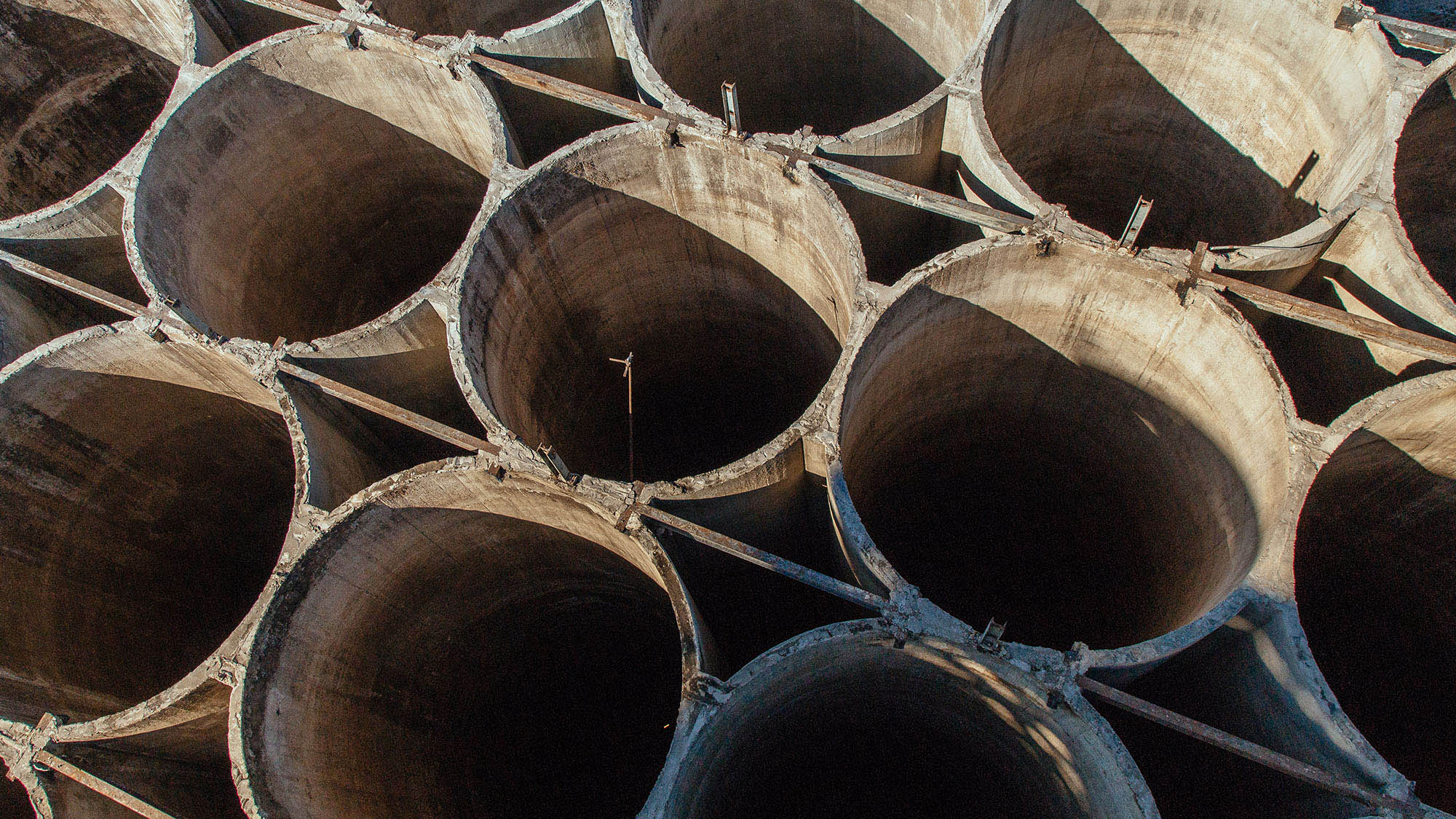
Aerial view of original concrete silos; image via Heatherwick Studio
To begin the transformation of Zeitz MOCAA’s major social hub, multiple layers of paint were first removed from the existing poured-in-place concrete structures, revealing their continuous surfaces. Astonishingly, each silo was originally constructed in a single pour, amplifying their geometry and overall monumentality. However, this also presented two major challenges.

Image via Heatherwick Studio
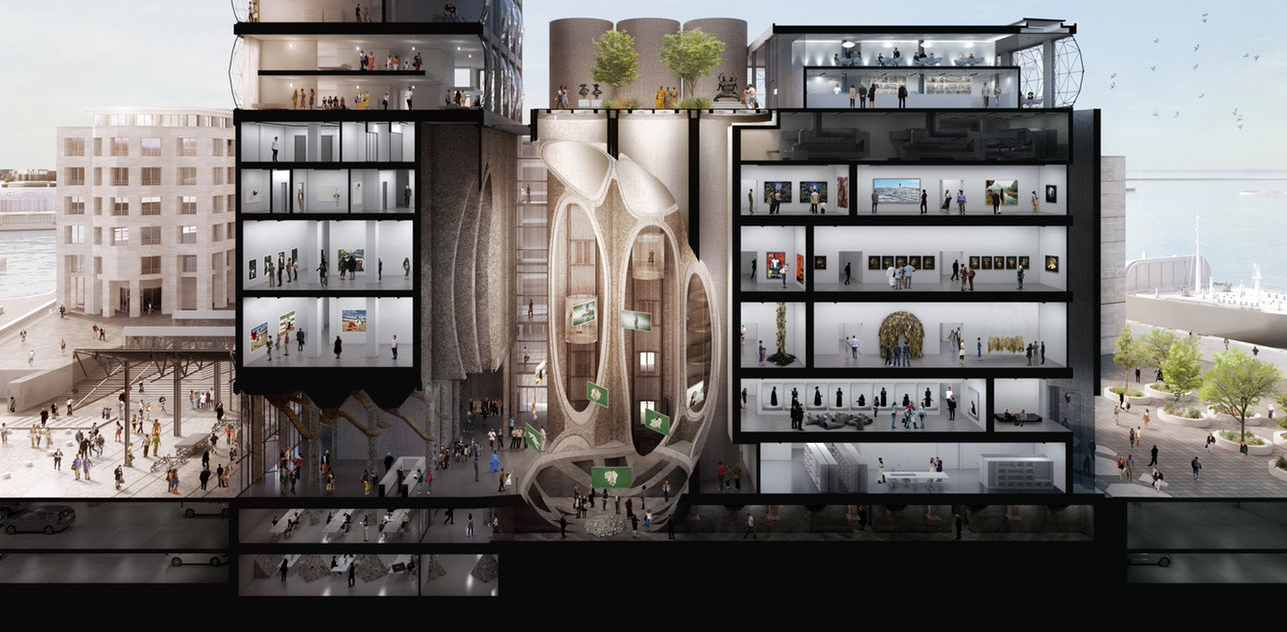
The section drawing shows the carved concrete silos at the heart of the building
Since the clustered concrete silos provided the building’s lateral stability, Heatherwick worked closely with engineers from Arup and local partner firms including Van der Merwe Miszewski Architects, Rick Brown Associates and Jacobs Parker, in order to design a new structure that would support the existing building, before carving into it. The result was 9¾-inches-thick reinforced concrete “sleeves,” which were poured inside each 18-foot-diameter cylinder. Only at this point, could the architects identify where the atrium’s voids or “corn kernels,” could be scooped out from the resulting two-layered concrete.
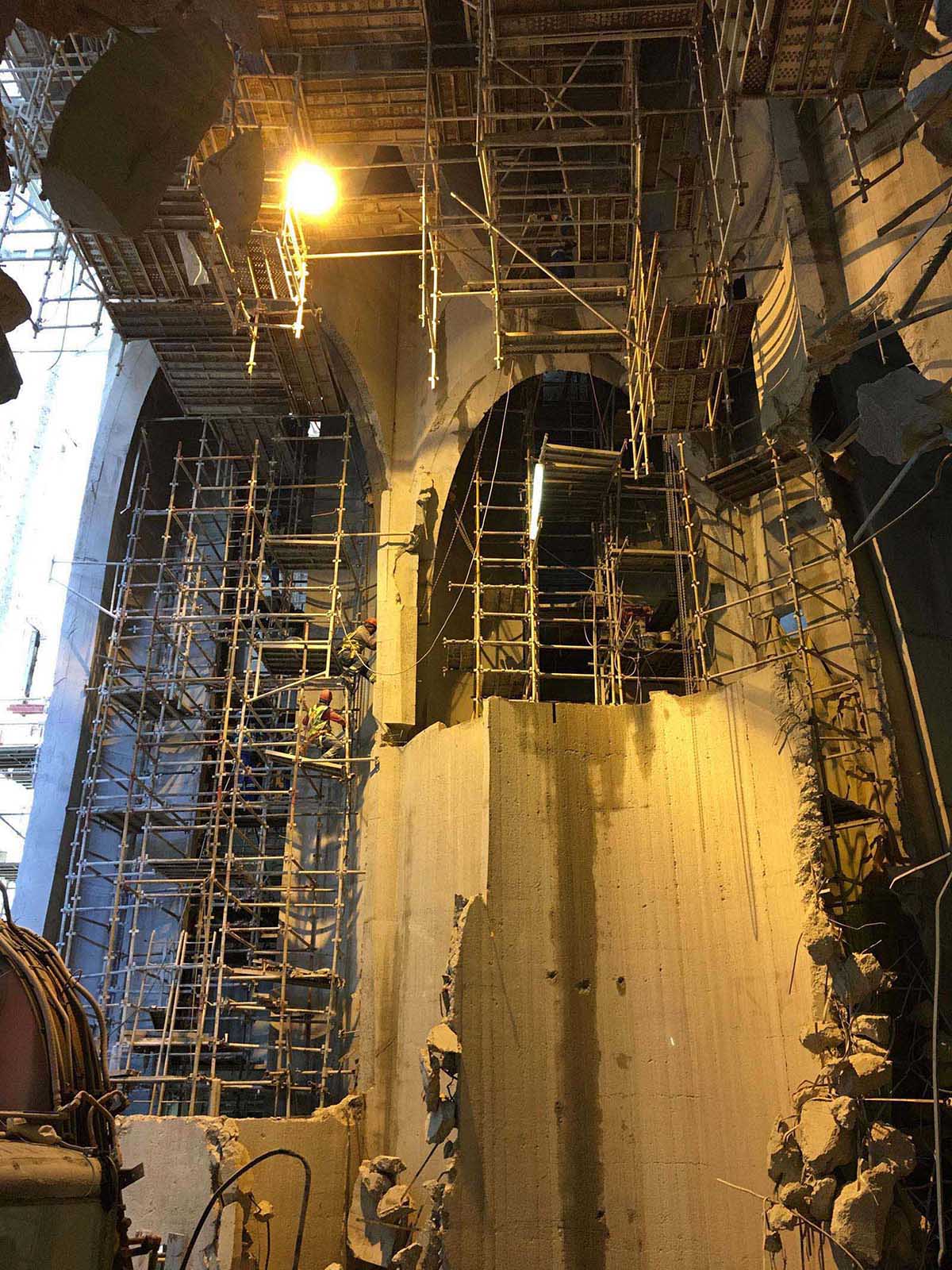
Construction progress; image via Heatherwick Studio
Additionally, since concrete takes 100 years to reach its maximum hardness, many of the elements of the 1920’s structure were incredibly hard while others were extremely weak due to age, shared Matthew Cash of Heatherwick Studio. “Carving into a structure that was simultaneously tough and soft was a real challenge, and it was almost archaeology — revealing the layers and the history and then having to adjust and adapt the design accordingly.”
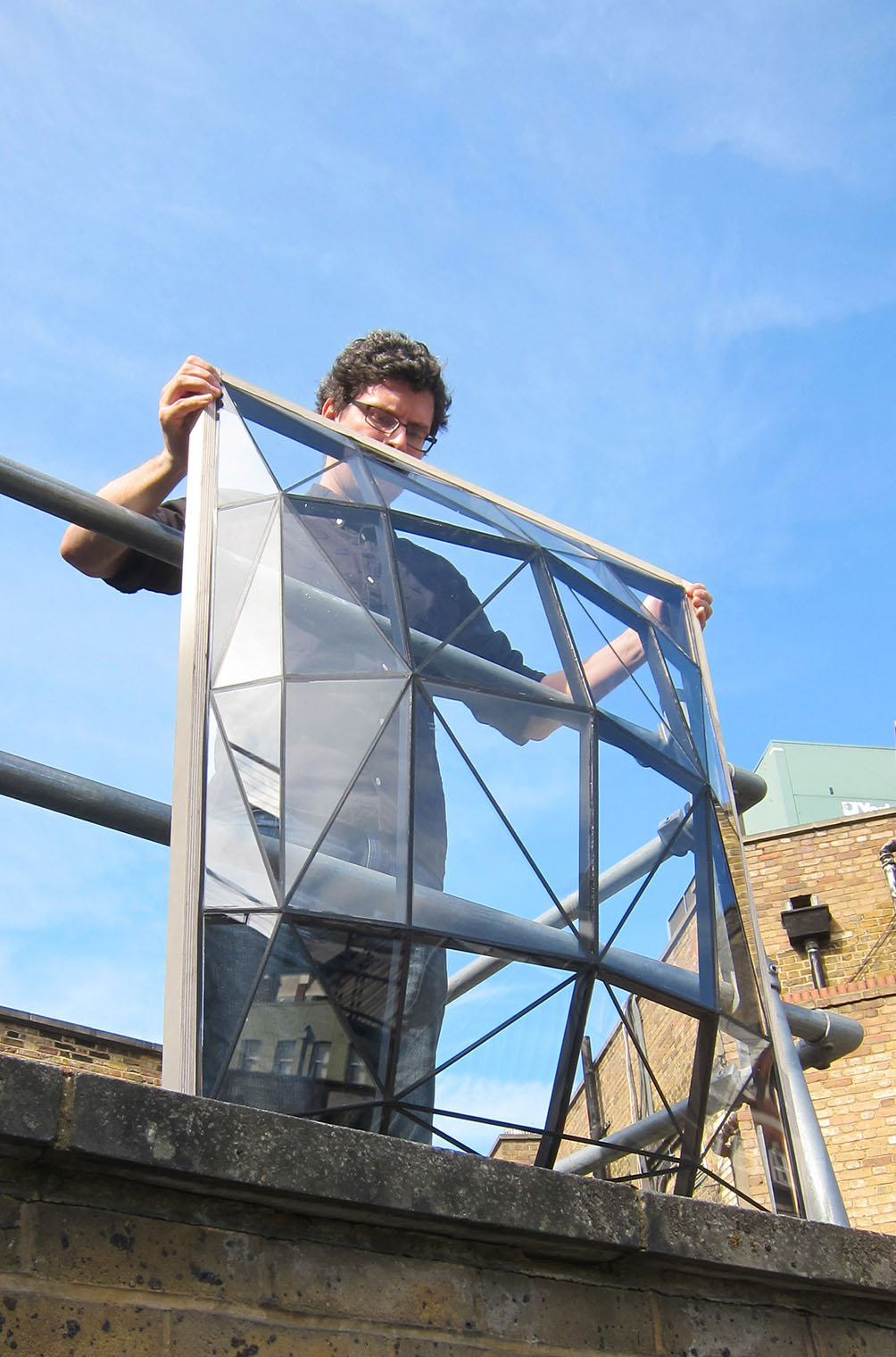
A close-up of one of the faceted glass panels; image via Heatherwick Studio
Heatherwick was also tasked with finding innovative ways to allow daylight into Zeitz MOCAA. In doing so with striking geometric glazing, the architects also asserted the building’s identity, as a beacon of contemporary art from miles away.
To create the structure’s striking faceted windows and a vast skylight that doubles as an unusual floor for the rooftop sculpture garden, the architects partnered with Mazor Aluminum. Heatherwick designed beautifully detailed pillowy windows to fill spaces where concrete walls previously existed. Offering a vibrant kaleidoscope of textures and colors, the appearance of the windows is hardly ever stagnant throughout the day.
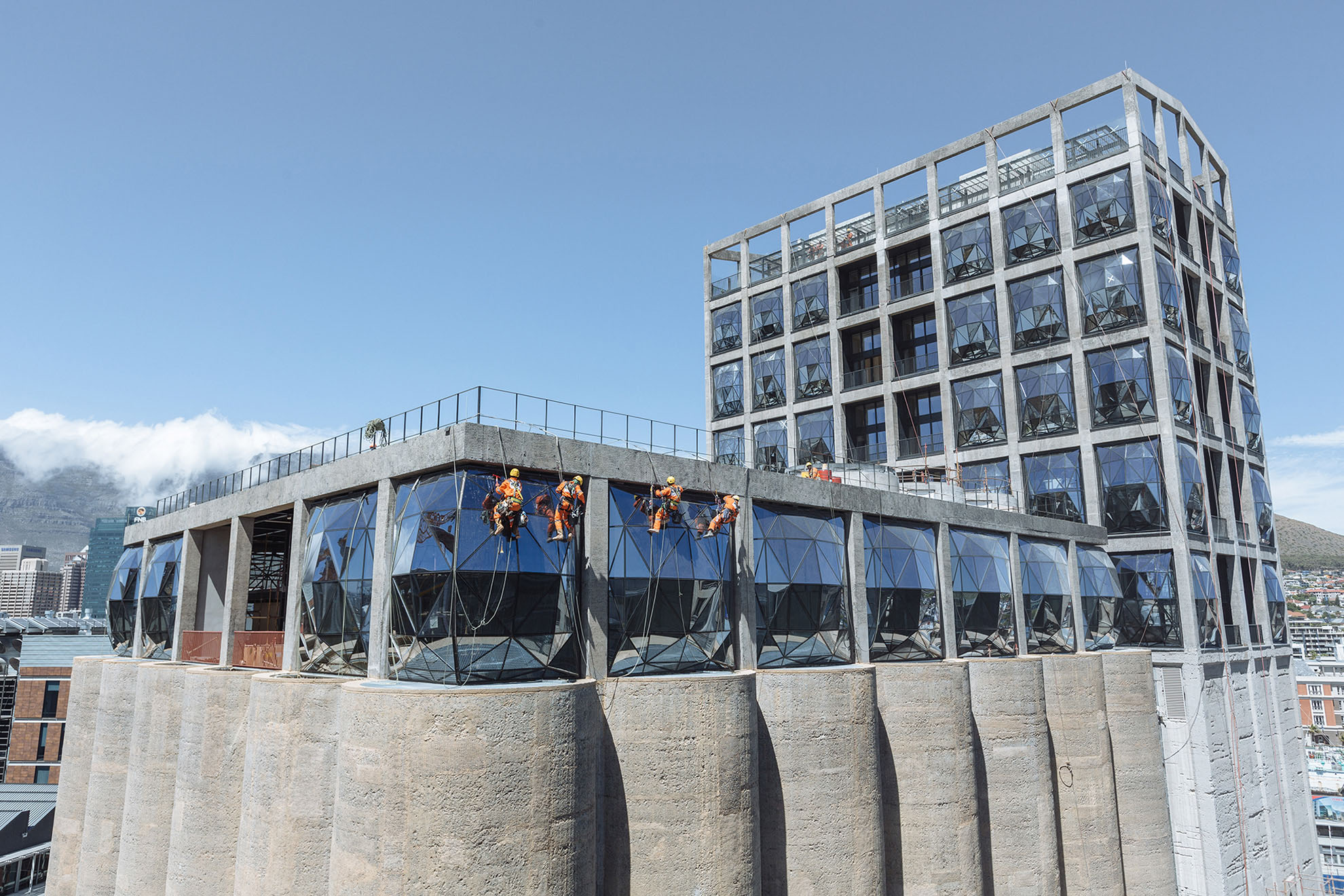
Construction progress; image via Heatherwick Studio
Flooding vertical beams of daylight into the space, the architects also used thick layers of fritted laminated glass to complete the building’s skylight; West African artist El Loko was commissioned to create the fritted pattern. Not only does the pattern create a walkable surface for the sculpture garden, but it also prevents excessive amounts of heat from building up inside.
Zeitz MOCAA is a nod to perseverant architectural process. Set up against a whole slew of century-old limitations, Heatherwick Studio harnessed exquisite detailing to create a design that would not only satisfy its necessary functions, but also excite and shock its patrons.
Calling all architects, landscape architects and interior designers: Architizer's A+Awards allows firms of all sizes to showcase their practice and vie for the title of “World’s Best Architecture Firm.” Start an A+Firm Award Application today.
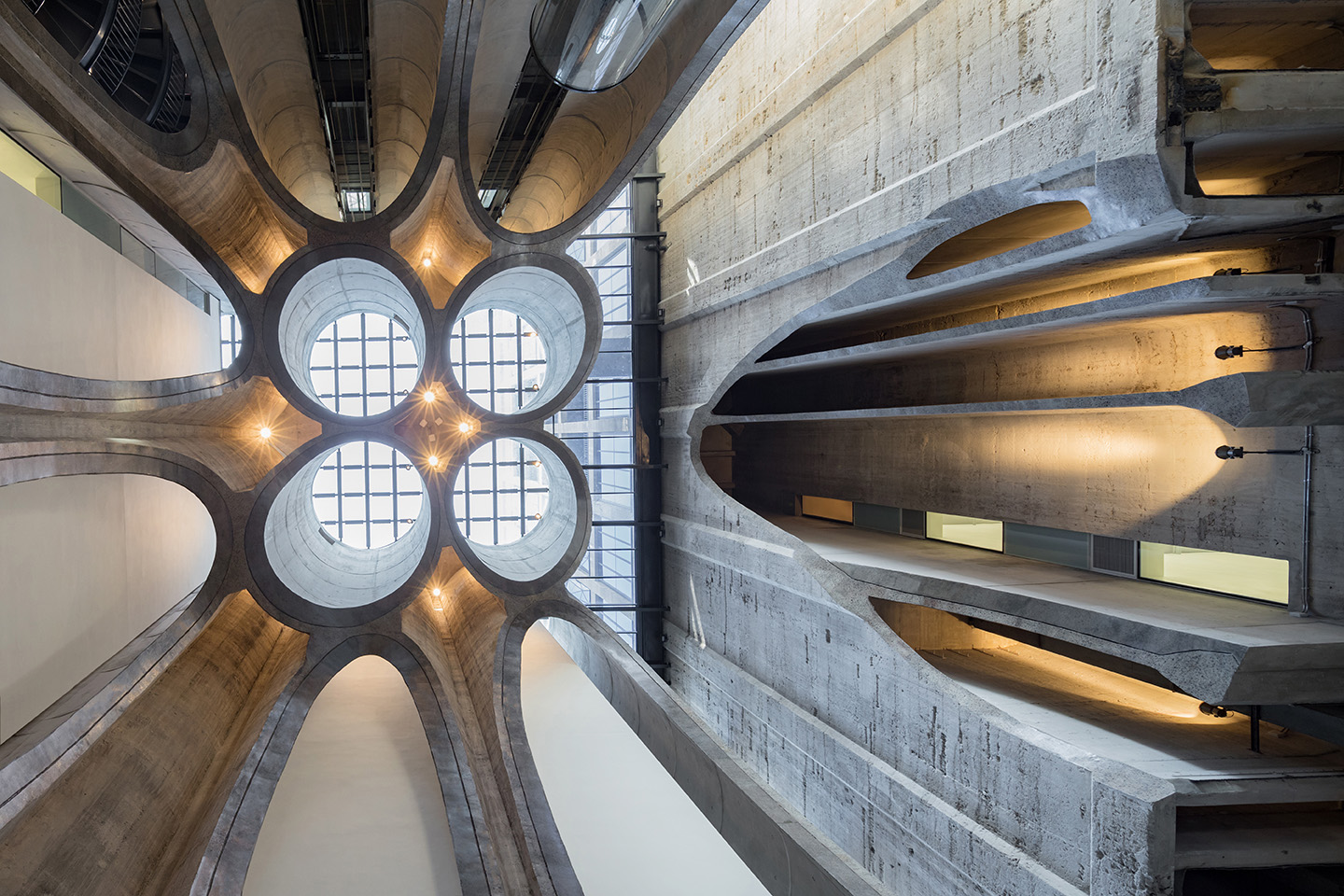
 Zeitz MOCAA
Zeitz MOCAA 